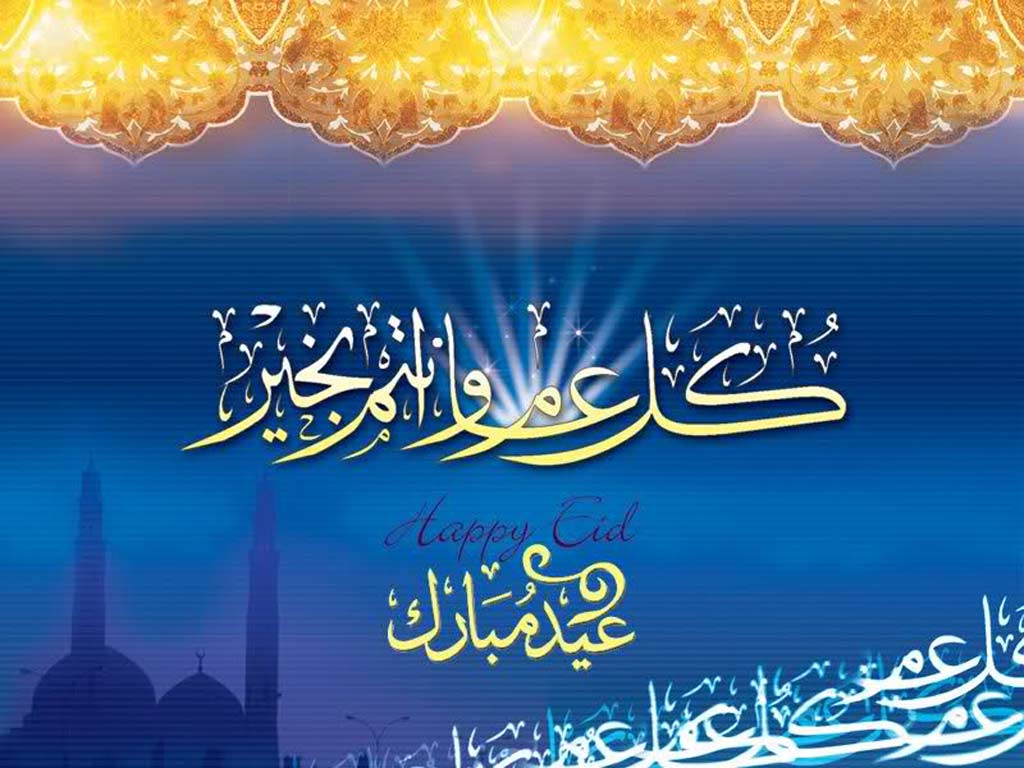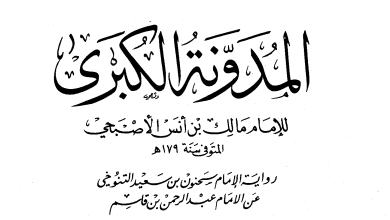A Timeless Tale of Erudition: al-Yūnīnī and his Proverbial Manuscript of Ṣaḥīḥ al-Bukhārī
A Timeless Tale of Erudition: al-Yūnīnī and his Proverbial Manuscript of Ṣaḥīḥ al-Bukhārī
By Shaykh Muntasir Zaman
While mapping out his genealogy of Ṣaḥīḥ al-Bukhārī, Ibn Ḥajar al-ʿAsqalānī (d. 852 AH) identifies nine routes of transmission from Muḥammad ibn Yūsuf al-Firabrī (d. 320 AH), the primary transmitter of the Ṣaḥīḥ from its author. These routes further multiply as the transmission spreads out in every successive generation.[1] The invention of the printing press has allowed for the production of countless identical copies of a book with ease, but that is a privilege unheard of not too long ago. Hence, due to a range of factors related to methodology, memory, comprehension, attendance, and scribal oversight, the recensions of the Ṣaḥīḥ naturally differed in their details.[2] In the 7th century AH, one Levantine scholar set out to collate the variants of the major recensions to produce the most accurate rendition of the work.

The legendary audition of Ṣaḥīḥ al-Bukhārī in Damascus around the year 666 AH headed by the renowned Ḥadīth scholar, Sharaf al-Dīn al-Yūnīnī (d. 701 AH), with the aid of the celebrated linguist, Ibn Mālik (d. 672 AH), in a gathering of scholars who utilized critically acclaimed manuscripts of the Ṣaḥīḥ for cross-referencing is an awe-inspiring episode of literature preservation in human history. Al-Yūnīnī’s role in latter-day scholarship on the Ṣaḥīḥ by collating the variants of its major recensions into one manuscript cannot be overemphasized. Starting with al-Yūnīnī’s biography, this article will explore this phenomenal project on the Ṣaḥīḥ. Three folios from manuscripts related to the Yūnīniyyah have been appended for the purpose of illustration.
Biography
Born in the year 621 AH, Abū al-Ḥusayn Sharaf al-Dīn ʿAlī belonged to a scholarly family that hailed from a small town in the region of Baʿlabakk known as Yūnīn—hence, the sobriquet al-Yūnīnī.[3] With the Reconquista in the West and the Mongol conquest of the Eastern Islamic lands, the political landscape during al-Yūnīnī’s day was highly turbulent.[4] His father was Taqī al-Dīn al-Yūnīnī (d. 658 AH), a Hanbalī jurist and Ḥadith scholar, and his brother was the renowned historian Quṭb al-Dīn al-Yūnīnī (d. 726 AH). Naturally, his educational upbringing was exceptional. From a tender age, he frequented the gatherings of experts and enjoyed the tutelage of over seventy teachers. In the constant pursuit of education, he traveled repeatedly to hubs of knowledge like Damascus and Egypt where he studied under Ibn al-Ṣalāḥ (d. 643 AH) and al-Mundhīrī (d. 656 AH), respectively.[5]
It goes without saying that his prominence in the field of Ḥadīth drew countless students to his study circle. Notable among his lengthy list of students are Taqī al-Dīn Ibn Taymiyyah (d. 728 AH), al-Qāsīm al-Birzālī (d. 739 AH), and Shams al-Dīn al-Dhahabī (d. 748 AH).[6] Without exception, his biographers only have positive things to say about him. Al-Ṣafadī (d. 764 AH) describes him as “unparalleled”[7] and al-Dhahabī states that he was “the teacher of the scholars.”[8] His oeuvre comprises merely of a Mashyakhah and a collection of elevated ḥadīths, but his major contribution to the academic world was his extraordinary work on Ṣaḥīḥ al-Bukhārī.[9] In the span of one year, he cross-referenced the Ṣaḥīḥ with its various recensions and then dictated the entire work eleven times.[10]
On Friday the 5th of Ramaḍān, 701 AH, after entering a local library, al-Yūnīnī was physically assaulted by a deranged assailant, which eventually led to his demise several days later at the age of 80.[11] Having received his first authorization as early as four[12] and spent his final days surrounded by books, al-Yūnīnī’s life was a personification of the famous adage: acquire knowledge from the cradle to the grave—Allah have mercy on his soul.
Al-Yūnīnī’s Project on the Ṣaḥīḥ
Around the year 666 AH in Damascus, al-Yūnīnī convened a gathering of scholars over 71 sessions in order to prepare a critically evaluated manuscript of Ṣaḥīḥ al-Bukhārī. For this purpose, al-Yūnīnī obtained five valuable manuscripts (nuskhahs) of the Ṣaḥiḥ,[13] making one of them the mother-text and alluding to variations in the remainder through symbols. By stipulating one manuscript as the mother-text, al-Yūnīnī did not make changes to the main text even if he deemed an alternative variant to be more accurate, in which case he noted the variant in the margins and then marked it as more accurate.[14] He prefaces his work with an introduction where he outlines his modus operandi.
The mother-text was based on ʿAbd al-Ghanī al-Maqdisī’s manuscript, [15] which in turn used Abū al-Waqt’s manuscript as an exemplar and contained other variants.[16] Until the 9th century, al-Maqdisī’s manuscript was the most authoritative for the Levantines, with attendance signatures from al-Mundhirī (d. 656 AH), al-Dhahabī, and al-ʿAlāʾī (d. 761 AH).[17] Al-Yūnīnī had Ibn Zayd (d. 702 AH), a qualified scribe known for his calligraphic handwriting,[18] pen a copy of this manuscript to use as the mother-text for the aforementioned cross-analysis.[19] The following manuscripts were then utilized to note variants:
- Abū Dharr al-Harawī (d. 434 AH), for which he used the symbol hā’. Given that Abū Dharr narrates via al-Mustamlī (d. 376 AH), al-Ḥammuwayh (d. 381 AH), and al-Kushmīhanī (d. 389 AH) from al-Firabrī, further symbols distinguish the source of the variant.
- ʿAbd Allāh al-Aṣīlī (d. 392 AH) via Abū Zayd al-Marwazī (d. 371 AH) from al-Firabrī, for which he used the symbol ṣād.
- Ibn ʿAsākir (d. 571 AH) via multiple routes leading back to al-Firabrī, for which he used the symbol sīn.
- Abū Saʿd al-Samʿānī (d. 562 AH) via Abū al-Waqt (d. 553 AH) via al-Dāwūdī (d. 467 AH) via al-Ḥammuwayh from al-Firabrī, for which he used the symbol ẓāʾ, interestingly on account of al-Samʿānī’s precision and phenomenal memory (ḥifẓ).[20]
Other symbols include lā to indicate the omission of something in a given source and ṣād/ḥā’ to show the preferability of a variant.[21] By way of illustration, some of the variants in figure 1 are noted as follows: hā’ and sīn (Abū Dharr and Ibn ʿAsākir) contain rasūl Allāh instead of al-nabī; ṣād (al-Aṣīlī) contains akhbaranā instead of akhbaranī; and hā’, ṣād, sīn, ṭā (Abū Dharr, al-Aṣīlī, Ibn ʿAsākir, and Abū al-Waqt)[22] omit hādhā and this is accompanied by ṣād/ḥā’ (i.e., the most accurate version). It is worth noting that Abū Dharr collating the variants of his three teachers from al-Firabrī into one manuscript is the first attempt at doing what, centuries later, al-Yūnīnī’s project aimed to accomplish, albeit in a much larger scale. [23]
Ibn Mālik’s Role
As part of his project, al-Yūnīnī’s sought the expertise of Ibn Mālik (d. 672 AH), the celebrated Andalusian grammarian, who attended the sessions, playing a crucial role in explicating abstruse linguistic issues. On the nature of Ibn Mālik’s role, al-Yūnīnī, who was the primary reciter,[24] writes in his concluding remarks that the cross-analysis and amendments were completed in the presence of Ibn Mālik, who “keenly observed my recitation and acutely noted my enunciation. I amended and marked as authoritative whatever he selected, preferred, and corrected. And I marked the words that he said lend themselves to two or three desinential inflections (iʿrāb) per his instruction and preference.”[25]
Ibn Mālik writes, “Whenever they came across a complicated passage, I explained what I deemed correct and vowelized it based on my knowledge of Arabic.”[26] Passages that required detailed grammatical exegesis were relegated to an independent treatise entitled “Shawāhid al-Tawḍīḥ wa al-Taṣḥīḥ li Mushkilāt al-Jāmiʿ al-Ṣaḥīḥ.” The said treatise comprises 71 sections based on the number of sessions he supervised.[27] For instance, under section 27 on the ḥadīth about hastening funerals so that the deceased may immediately receive their compensation, Ibn Mālik states that the pronoun in ilayhā should be masculine (i.e., ilayhi) because it refers back to the word khayr. Citing Qurʿānic verses, ḥadīths, and Arabic poetry, he explains that it is grammatically correct to use a feminine pronoun to refer back to a masculine word when what is intended is feminine. Although the word khayr is masculine, what is intended is raḥmah, ḥusnā, or yusrā, all of which are feminine.[28]
As is clear from a close reading of Shawāhid al-Tawḍīḥ and his comments noted in the margins of al-Yūnīnī’s manuscript, Ibn Mālik did not alter any alleged grammatical errors in the text of Ṣaḥīḥ al-Bukhārī. He only vowelized and explicated abstruse passages. Even passages that ostensibly conflicted with conventional grammar laws, once proven that they were part of the transmission, he provided explanations for them.[29] That being said, not every passage ostensibly conflicted with conventional grammar laws. In many instances, he simply presented the grammatical origins of passages that already conformed to these laws, highlighted points of disagreement among grammarians, and used certain passages as a pretext to elucidate concepts that were not adequately addressed in other books.[30]
Subsequent Scholarship on the Exemplar
During and after al-Yūnīnī’s lifetime, his manuscript was accessible and countless secondary copies were written. It was then transferred as an endowment to the Mamlūk official ʿAlāʾ al-Dīn Aqbughā’s (d. 843 AH) madrasah in Cairo, during which time al-Qasṭallānī (d. 923 AH) used it for his commentary on the Ṣaḥīḥ, Irshād al-Sārī.[31] After remaining in the possession of Muḥammad al-Rūdānī (d. 1094 AH),[32] the author of Jamʿ al-Fawāʾid, it passed into the hands of the Meccan Ḥadīth expert, ʿAbd Allah ibn Sālim al-Baṣrī (d. 1134 AH),[33] who is on record for spending twenty years in meticulously refining and cross-referencing his personal copy of Ṣaḥīḥ al-Bukhārī with multiple manuscripts including the Yūnīniyyah.[34]
In 1893 CE, the Ottoman Sultan, ʿAbd al-Ḥamīd II (d. 1918), issued an imperial decree to the Cairene publishing house al-Maṭbaʿah al-Amīriyyah to print a meticulously evaluated edition of the Ṣaḥīḥ.[35] Using a range of invaluable manuscripts, particularly the Yūnīniyyah that was sent from the imperial library of Istanbul for this purpose, [36] the project was complete by 1895 CE and the first edition of the work was released in nine volumes. A committee of 16 Ḥadīth scholars from al-Azhar—under the auspices of the Grand Shaykh of al-Azhar, Ḥassūnah al-Nawāwī—were then tasked with reviewing the work.[37] It is uncertain whether the Yūnīniyyah remained in Cairo after the revision or was returned to Istanbul. Its exact whereabouts are currently unknown.[38]
Be that as it may, there are multiple secondary copies of the manuscript on par or even superior to the original, as al-Qasṭallānī explains in respect to Muḥammad al-Ghazūlī’s (d. 777 AH) copy.[39] Perhaps the most valuable secondary copy is that of Shihāb al-Dīn al-Nuwayrī (d. 733 AH), who had written with great accuracy at least eight copies of al-Yūnīnī’s manuscript.[40] Another valuable and accessible secondary source is al-Qasṭallānī’s Irshād al-Sārī, which utilized both the original manuscript as well as excellent secondary copies.[41]
Conclusion
Given that Ṣaḥīḥ al-Bukhārī plays such a pivotal role in documenting the ḥadīths of the Prophet (peace and blessings be upon him), it comes as no surprise that scholars have historically given unprecedented attention to maintaining its textual integrity. In the 7th century, the Damascene Ḥadīth expert, Sharaf al-Dīn al-Yūnīnī, carried out a unique project, ensuring that this task was accomplished in a manner that would adorn the annals of history.[42] Al-Yūnīnī’s effort in preserving the various recensions of the Ṣaḥīḥ, and by extension the Ṣaḥīḥ itself, although highly laudable, is only part of successive, collective efforts by Muslim scholars since the students of al-Bukhārī to ensure that his magnum opus remains unadulterated. There is much that can be said about al-Yūnīnī’s project, but it is hoped that the foregoing discussion will help students to develop a basic understanding and appreciation of his efforts as well as subsequent scholarship that built upon his work.
Appendix



[1] Ibn Ḥajar, Fatḥ al-Bārī, vol. 1, pp. 5-7.
[2] On the nature and categories of these predominantly negligible differences, see ʿAbd al-Qādir Jalāl, Iʿlāʾ al-Bukhārī, pp. 65-71. The Cordoban Ḥadīth scholar, Abū ʿAlī al-Jayyānī (d. 498 AH), authored “Taqyīd al-Muhmal wa Tamyīz al-Mushkil” which is regarded as the most notable classical study on these variants. For a list of classical and contemporary studies on the variants between the recensions of the Ṣaḥīḥ, see Shifāʾ, Riwāyāt al-Jāmiʿ al-Ṣaḥīḥ li al-Imām al-Bukhārī: Riwāyat Abī Dharr Namūdhajan, pp. 30-35.
[3] Although the town is famously known as Yūnīn, it also takes the name Yūnān. See al-Zabīdī, Tāj al-ʿArūs, vol. 36, p. 314.
[4] Rosemarie Quiring-Zoche, “How al-Bukhārī’s Ṣaḥīḥ was Edited in the Middle Ages: ʿAlī al-Yūnīnī and His Rumūz,” Bulletin D’études Orientales, 50 (1998), p. 193.
[5] Tadmurī, “Introduction,” in Mashyakhat Sharaf al-Dīn al-Yūnīnī, pp. 5-7.
[6] Ibn Rajab, Dhayl ʿalā Ṭabaqāt al-Ḥanābilah, vol. 4, p. 332.
[7] Al-Ṣafadī, Aʿyān al-ʿAṣr, vol. 3, p. 476.
[8] Al-Dhahabī, al-Muʿjam al-Mukhtaṣṣ, pp. 168-69.
[9] Tadmurī, “Introduction,” Mashyakhat Sharaf al-Dīn al-Yūnīnī, p. 27.
[10] Al-Dhahabī, al-Muʿjam al-Mukhtaṣṣ, p. 169; idem, Muʿjam al-Shuyūkh al-Kabīr, vol. 1, p. 40.
[11] Al-Dhahabī, Muʿjam al-Shuyūkh al-Kabīr, vol. 2, p. 40; Ibn Rajab, Dhayl ʿalā Ṭabaqāt al-Ḥanābilah, vol. 4, p. 332; Rosemarie, “How al-Bukhārī’s Ṣaḥīḥ was Edited in the Middle Ages,” p.196
[12] His earliest teachers, al-Ḥasan al-Jawālīqī and Ibn Ghufayjah, both passed away in 625 AH. Therefore, he received his first authorization, albeit a general one, at latest by the age of four. See Jumuʿah, Riwāyāt al-Jāmiʿ al-Ṣaḥīḥ wa Nusakhuhu, p. 657. Given his age, he was obviously brought to these Ḥadīth sessions by his father. On the presence of children in Ḥadīth dictation sessions, see Davidson, Carrying on the Tradition: An Intellectual and Social History of Post-Canonical Hadīth Transmission, p. 95 f.
[13] Linguistically, the word nuskhah refers to a copied manuscript. In the post-transmission phase, it is often used synonymous to the recensions (riwāyāt) of a book, e.g. Abū Dharr’s nuskhah of Ṣaḥīḥ al-Bukhārī. See Jumuʿah, Riwāyāt, p. 42.
[14] By contrast, some latter-day scholars—like Ibn al-Sarrāj (d. 782 AH) and al-Biqāʿī (d. 885 AH) in their respective manuscripts—wrote authenticating manuscripts (nusakh al-taṣḥīḥ) where the objective is to establish the most accurate version of any given recension in the main text. Al-Yūnīnī’s methodology conforms to mainstream Ḥadīth scholarship. See al-ʿUtaybī, Kitāb Jabr, p. 335.
[15] In his introduction, al-Yūnīnī explains that the mother-text for the cross-analysis was copied from the manuscript used for the authorization he received from his teacher Abū ʿAbd Allāh al-Ḥusayn al-Zabīdī in the citadel of Damascus in the year 630 AH. Abū Hāshim al-ʿUtaybī argues that the mother-text was copied from ʿAbd al-Ghanī al-Maqdisī’s manuscript, which in turn was copied from Abū al-Waqt’s manuscript and contained variants from other recensions. Based on the attendance signatures on al-Maqdisī’s manuscript, al-ʿUtaybī continues, it is clear that this was the manuscript al-Zabīdī utilized in 630 AH when teaching al-Yūnīnī. Hence, al-Zabīdī’s authorization of Ṣaḥīḥ al-Bukhārī described in al-Yūnīnī’s introduction was based on al-Maqdisī’s manuscript, and therefore, it was the source of the mother-text. See al-ʿUtaybī, Kitāb Jabr, pp. 68, 122, 163, 401; cf. Jumuʿah, Riwāyāt, p. 678. Since al-Zabīdī was authorized by Abū al-Waqt, using al-Maqdisī’s manuscript—i.e. not the manuscript he used when studying under Abū al-Waqt—would not be an issue because al-Maqdisī’s manuscript was copied from Abū al-Waqt’s manuscript.
[16] Al-ʿUtaybī, Kitāb Jabr, pp. 29, 33, 122.
[17] Ibid., pp. 9-10.
[18] Al-Ṣafadī, Aʿyān al-ʿAṣr, vol. 4, p. 545.
[19] Al-ʿUtaybī, Kitāb Jabr, pp. 29, 122.
[20] This manuscript was also read to Karīmah al-Marwaziyyah (d. 463 AH) via al-Kushmīhanī from al-Firabrī. As such, it contains both the variants of Abū al-Waqt and Karīmah al-Marwaziyyah. See al-ʿUtaybī, Kitāb Jabr, p. 150; Jumuʿah, Riwāyāt, pp. 673, 679.
[21] On al-Yūnīnī’s symbols, see al-Qasṭallānī, Irshād al-Sārī, vol. 1, p. 40; al-ʿUtaybī, Kitāb Jabr, pp. 145-53; Jumuʿāh, Riwāyāt, pp. 683-90.
[22] The symbols ṭāʾ and ẓāʾ are used interchangeably. See Zuhayr Nāṣir, “Introduction,” in al-Jāmiʿ al-Musnad al-Ṣaḥīḥ, vol. 1, pp. 39, 45.
[23] In her landmark study “Riwāyāt al-Jāmiʿ al-Ṣaḥīḥ li al-Imām al-Bukhārī: Riwāyat Abī Dharr Namūdhajan,” Dr. Shifāʾ ʿAlī studies the variants of Abū Dharr in detail. See, for instance, pp. 281 f.
[24] Al-Qasṭallānī, Irshād al-Sārī, p. 40.
[25] As recorded in Shihāb al-Dīn al-Nuwayrī’s (d. 733 AH) 5th copy of the Yūnīniyyah where these comments are originally found. See al-ʿUtaybī, Kitāb Jabr, p. 158.
[26] Al-Qasṭāllānī quotes Ibn Mālik’s remarks from the margins of the Yūnīniyyah’s cover page. See Qasṭallānī, Irshād al-Sārī, vol. 1, p. 41; cf. al-ʿUtaybī, Kitāb Jabr, p. 161.
[27] Ṭāhā Muḥsin, “Introduction,” in Shawāhid al-Tawḍīḥ, p. 13.
[28] Ibn Mālik, Shawāhid al-Tawḍīḥ, p. 142-45.
[29] Al-Qasṭallānī, Irshād al-Sārī, vol. 1, p. 40.
[30] Ṭāhā Muḥsin, op. cit., pp. 15-16.
[31] Al-Qasṭallānī writes that he completed his commentary on Ṣaḥīḥ al-Bukhārī using an impeccable secondary copy and the second part of the original; the first half of the Yūnīniyyah had been lost for 50 years. After completing his commentary, the lost portion resurfaced, so he used it to edit the relevant parts of his commentary. See Qasṭallānī, Irshād al-Sārī, vol. 1, p. 40; Aḥmad Shākir, al-Naqd li al-Nuskhah al-Yūnīniyyah min Ṣaḥīḥ al-Bukhārī, p. 9. In his commentary on Ṣaḥīḥ al-Bukhārī, at least in place Ibn Ḥajar al-ʿAsqalānī mentions that he consulted al-Yūnīnī’s manuscript for clarification. However, the extent of his usage and the nature of the copy he consulted require further study. See Ibn Ḥajar, Fatḥ al-Bārī, vol. 1, p. 224/ cf. vol. 10, p. 97; cf. al-Rayyān, al-Imām al-Yūnīnī wa Juhūduhū fī Ḥifẓ Ṣaḥīḥ al-Imām al-Bukhārī wa Taḥqīq Riwāyātihī, Majallat al-Jāmiʿah al-Islāmiyyah, vol. 10 (2002) p. 244.
[32] Al-Manūnī, Ṣaḥīḥ al-Bukhārī fī al-Dirāsāt al-Maghribiyyah, Majjallat al-Lughah al-ʿArabiyyah, vol. 29 (1394 AH), p. 533; al-ʿUtaybī, Kitāb Jabr, pp. 231-32.
[33] Ibid.
[34] Al-Kattānī, Fahras al-Fahāris, vol. 1, p. 198; ʿAwwāmah, “Introduction,” in Sunan Abī Dāwūd, pp. 99-103. ʿAbd Allāh al-Baṣrī had written at least eight copies of the Ṣaḥīḥ. One of these manuscripts—some sources state that it was his commentary on the Ṣaḥīḥ, not the actual manuscript—was bought by Muḥmmad Asʿad al-Makkī, who sent it to Aurangabad, India. Another was in the possession of Ṭāhir Sunbul in Madīnah, which was used for the Amīriyyah edition. See al-Kattānī, Fahras al-Fahāris, vol. 1, p. 199; al-Ḥasanī, Nuzhat al-Khawāṭir, vol. 6, p. 802.
[35] Al-Maṭbaʿah al-Amīriyyah was opened in 1820 CE in Būlāq, a district in Cairo, under the rule of Muḥammad Ali Pasha, the Ottoman Khedive of Egypt. Ownership of the press shifted over the decades as did the name. Prominent names include Maṭbaʿat Būlāq and Maṭbaʿat al-ʿĀmirah. See Iḥsānoghlū, al-Atrāk fī Miṣr wa Turāthuhum al-Thaqāfī, pp. 427-28.
[36] It is difficult to say with absolute certainty that the manuscript used was al-Yūnīnī’s original or a secondary copy. Although al-Nawāwī’s introductory remarks to the Amīriyyah edition give the impression that the original was used, comments from the committee seem to suggest otherwise. See Aḥmad Shākir, al-Naqd, p. 11; Jumuʿah, Riwāyāt, pp. 694-95. Ṣalāḥ Fatḥī succinctly summarizes the various opinions, concluding that they definitely did not use the original Yūnīniyyah but rather important secondary sources like ʿAbd Allāh al-Baṣrī’s manuscript. See Ṣalāḥ Fatḥī, Taḥrīr al-Aṣl al-Muʿtamad dī al-Ṭabʿah al-Sulṭāniyyah, p. 15
[37] Aḥmad Shākir, al-Naqd, pp. 11-12.
[38] Aḥmad Shākir inclines to the position that it was returned to the imperial library in Istanbul. See ibid.
[39] Al-Qasṭallānī, Irshād al-Sārī, vol. 1, p. 41.
[40] Al-Ṣafadī, Aʿyān al-Aʿṣār, vol. 1, p. 281.
[41] Recently, Dār al-Ghawthānī published a critically edited version of Irshād al-Sārī in 10 volumes with editorial work by Shaykh Zuhayr Nāṣir.
[42] Even Franz Rosenthal referred to al-Yūnīnī’s work on Ṣaḥīḥ al-Bukhārī as a “masterpiece of Muslim theological scholarship.” See Rosenthal, The Technique and Approach of Muslim Scholarship, p. 27.






